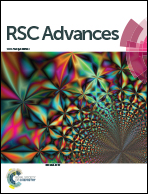Nanostructured and spiky gold in biomolecule detection: improving binding efficiencies and enhancing optical signals
Abstract
Nanostructured gold can improve the ability to detect biomolecules. Whether planar nanostructured surfaces or nanostructured particles are used, similar principles governing the enhancement apply. The two main benefits of nanostructured gold are improved geometry and enhancement of optical detection methods. Nanostructuring improves the geometry by making surface-bound receptors more accessible and by increasing the surface area. Optical detection methods are enhanced due to the plasmonic properties of nanoscale gold, leading to localized surface plasmon resonance sensing (LSPR), surface-enhanced Raman scattering (SERS), enhancement of conventional surface plasmon resonance sensing (SPR), surface enhanced infrared absorption spectroscopy (SEIRAS) and metal-enhanced fluorescence (MEF). Anisotropic, particularly spiky, surfaces often feature a high density of nanostructures that show an especially large enhancement due to the presence of electromagnetic hot-spots and thus are of particular interest. In this review, we discuss these benefits and describe examples of nanostructured and spiky gold on planar surfaces and particles for applications in biomolecule detection.


 Please wait while we load your content...
Please wait while we load your content...